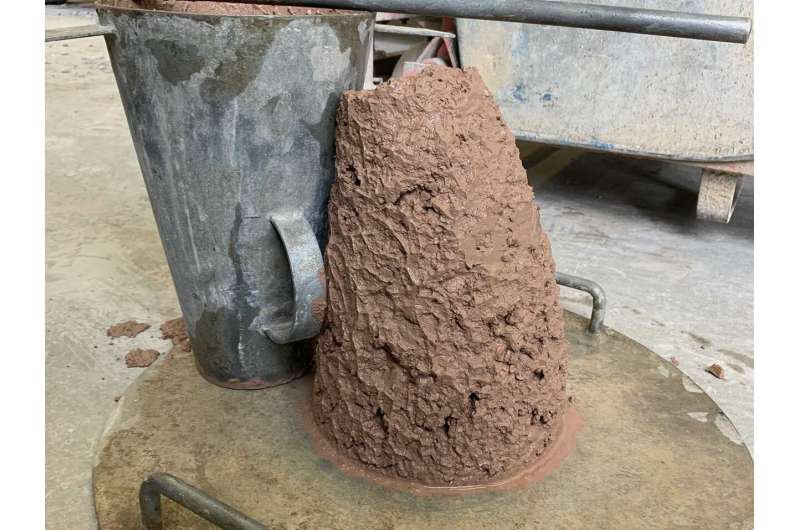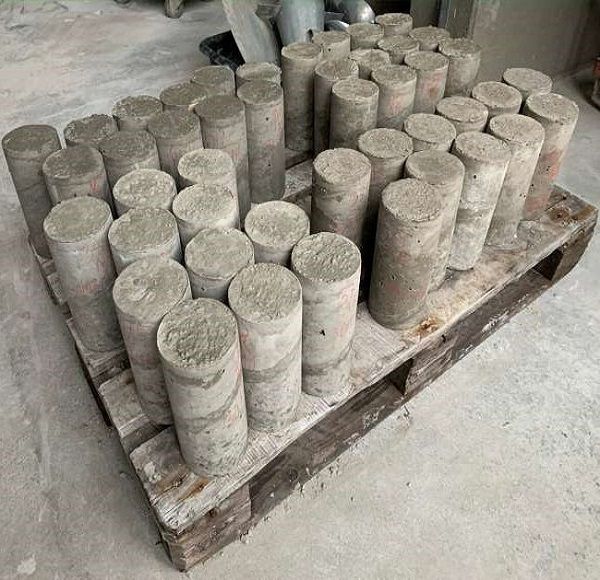ETH researchers are developing a low-carbon cement with a significantly lower embodied CO2 content than traditional cement. The Ultra Green Concrete project aims to make low-carbon, high-performance concrete widely accessible.
This is why the concrete industry generates around 8% of global CO2 emissions—more than the aviation and shipping industry combined. Franco Zunino, a senior scientist at the Institute for Building Materials at ETH Zurich, wants to alter the formulation of concrete by adopting an “ultra-green concrete” approach.
The ideal concrete
Concrete consists of a mixture of cement, aggregates and water. Traditional cement is composed of about 95% clinker and 5% gypsum. To produce cement, limestone and clay are burned into clinker in a kiln heated to 1,450°C, which inevitably releases CO2 due to the chemical decomposition of limestone. The huge amount of energy required by the kiln further worsens cement’s carbon footprint.
EPFL has already launched its Limestone Calcined Clay Cements (LC3) project, in which Zunino is actively involved and which has set a new standard in cement production. It has developed a cement formulation using 50% clinker and a combination of calcined clay and limestone that has cut CO2 emissions by around 40%. However, improving the formulation of concrete can bring about a significant increase in these environmental benefits. This is where Zunino’s UGC project at the ETH-Department of Civil, Environmental and Geomatic Engineering (D-BAUG) comes in.
Zunino pursues a two-fold strategy for the new green concrete: first, reducing the clinker content, i.e., the amount of clinker per unit of cement; second, lowering the ratio of cement in the concrete. This dual strategy offers flexibility in tailoring low-carbon concrete compositions to individual markets.
“The ideal would be to implement both at the same time; but the individual components are independent of each other. In some markets, it may be difficult to implement both aspects of the dual strategy, as production capacity and infrastructure need to be put in place. However, it is possible to implement at least one of them and still save reduce CO2 emissions,” Zunino explains.
Calculations by Zunino and his team have shown that the CO2 emissions of Ultra Green Concrete can be reduced from 300 kg per cubic meter to about 80–100 kg per cubic meter. Depending on the application, up to two-thirds of CO2 emissions could be consequently saved without compromising material performance. Although the researcher emphasizes that there is no such thing as inherently climate-neutral or carbon-negative concrete, he believes there are no excuses for the industrialized world not to adopt this new and more sustainable building material right away.

More cost-effective than traditional concrete
One reason for the reluctance might be that the concrete industry is not particularly innovative. Concrete has proven to be highly successful due to being cost-effective, safe and user-friendly. According to Zunino, “green concrete” could be even cheaper than conventional concrete. The proportion of expensive components is lower, while the quality and thus price of the concrete remain the same. This creates financial incentives for using more environmentally friendly material.
Safety aspects are also important, of course. Zunino states, “Anyone who builds a house wants to use a material that ensures it will stand for a hundred years. But we have to ask ourselves whether this really makes sense in view of the enormous CO2 emissions involved. Could we instead use a material that meets the structure’s required life cycle but emits significantly less CO2? In a climate-crisis scenario, one ton of CO2 saved today is more valuable than the same ton saved in 50 years.”
LC3 production is already under way
Zunino stresses that low-carbon cement is even more durable than conventional cement. There are currently about seven large-scale cement plants worldwide producing cement using the LC3 approach. Zunino expects that number to exceed 40 in the coming years.
“Demand for concrete will increase in the future. We can offer assistance by developing improved concrete mixtures with a lower cement content and thus still achieve our environmental goals,” Zunino adds. He is convinced that LC3 will be the most widely used type of cement worldwide 10 years from now.
Source: Techxplore









